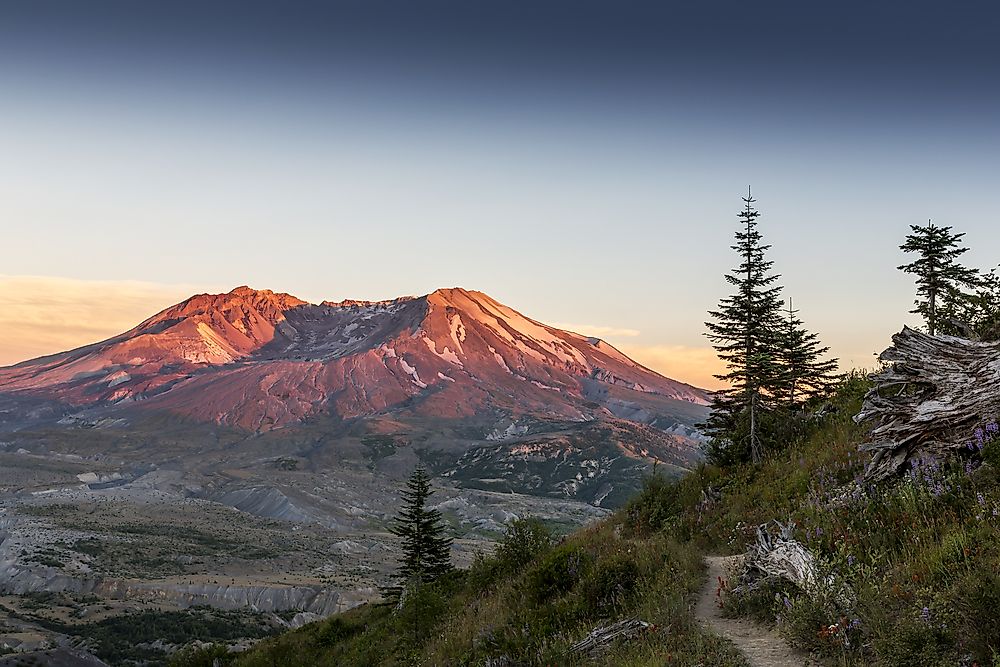When Did The Last Major Volcanic Eruption In The US Happen?

The United States has had a number of volcanic eruptions in the past. Among them, the most serious major eruption happened back on May 18, 1980, in the state of Washington. The mountain that caused that major eruption was none other than Mount St. Helens, which is located in the state’s Skamania County. To this day, it is still classified as the most destructive in the history of the US.
Volcanism in the US
There are approximately 200 active volcanoes in the United States, with the states of Alaska, Hawaii, Oregon, California, and Washington having the most active volcanoes in the country. Hawaii is home to the world's largest active volcano, Mauna Loa. The 1980 eruption of Mount St. Helens is considered the last major eruption in the US. The eruption in Washington was classified as a VEI 5 event, that is, the Volcanic Explosivity Index, which is a measure of an earthquake’s explosiveness. The scale runs from one to eight with a higher number meaning a higher explosiveness of the eruption. Prior to the eruption, there were a series of earthquakes and steam emissions for a period of around two months as well as some magma.
1980 Mount St. Helens Eruption
On May 18, 1980, at exactly 8:32:17 a.m. (UTC−7), a strong earthquake of magnitude 5.1 triggered a massive landslide. On that Sunday, all the prior build-up to the eruption caused the biggest earthquake in the history of the US. The landslide traveled at speeds of between 110 and 155 miles per hour. The result of the landslide was the exposure of the mountain’s dacite magma at the neck of the mountain. The gas-charged molten rock and steam exploded a few seconds later. The ensuing projectiles hurled by the eruption traveled at speeds of about 670 mph. Some scientists estimate that they may have traveled at speeds higher than sound.
The flow of the pyroclastic material spread outward and covered an area of about 23 miles wide and a length of around 19 miles. About 230 square miles of forest cover was destroyed while the heat went further and destroyed life outside the range of flow. Flow material at high temperature was also able to reach North Fork Toutle River and Spirit Lake. The contact between water and the hot material caused secondary steam explosions whose sound traveled as far as British Columbia, northern California, Idaho, and Montana. Interestingly, areas close to the blasts did not hear the sounds. In addition to all this, an ash column shot up into the sky to a height of about 12 miles. To put the eruption in perspective, the thermal energy released by the eruption was about 24 megatons, which was about 1,600 times the bomb that destroyed Hiroshima.
Aftermath
Immediately after the eruption, it was established that there was a loss of human life as well as property. Around 57 people were killed while property including 47 bridges, 200 houses, 15 miles of railway line, and 185 miles of highway was ruined. Indirectly, two more people died due to reduced visibility from the ash while two others died while shoveling ash. In addition, plenty of agricultural crops including potatoes, wheat, apples, and others were destroyed. Animal life, including fish species in rivers and water bodies, was also lost. A day later, a second eruption occurred although there was no loss of life.











